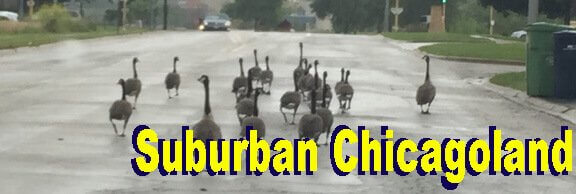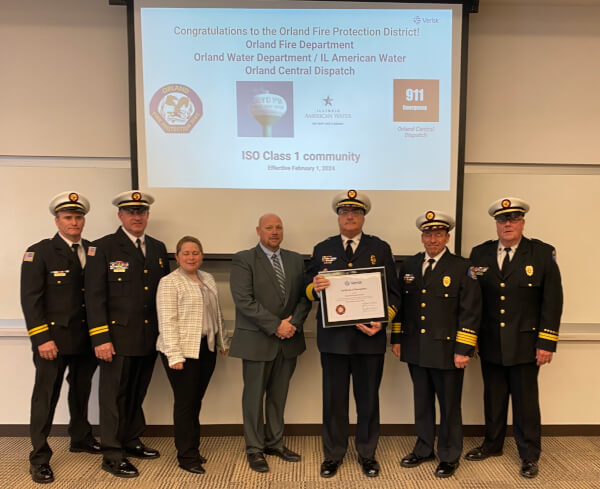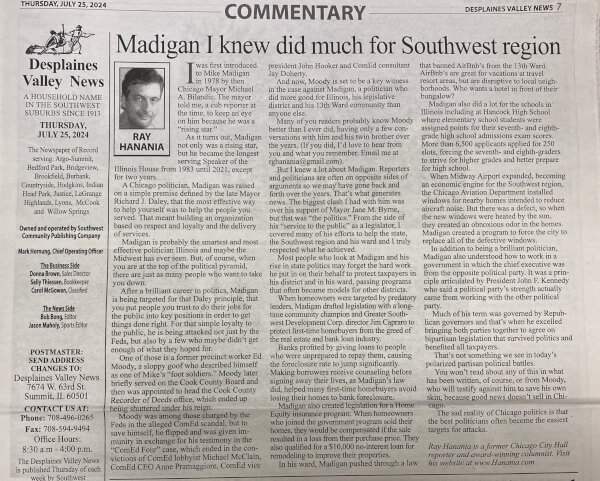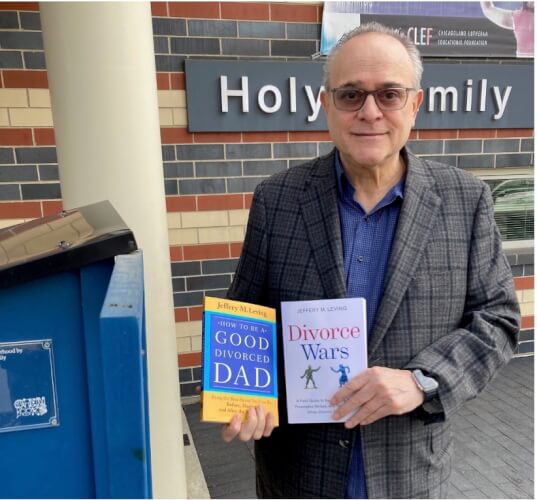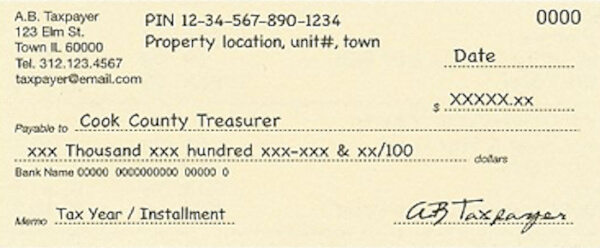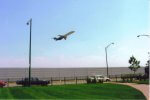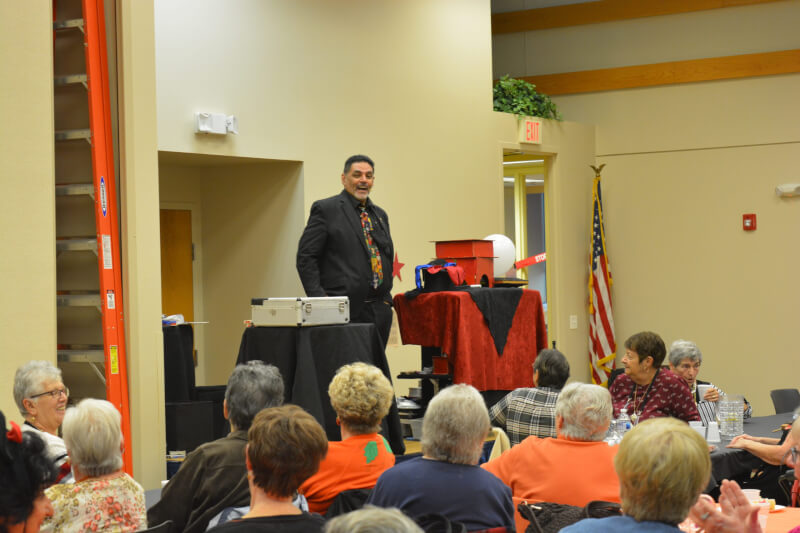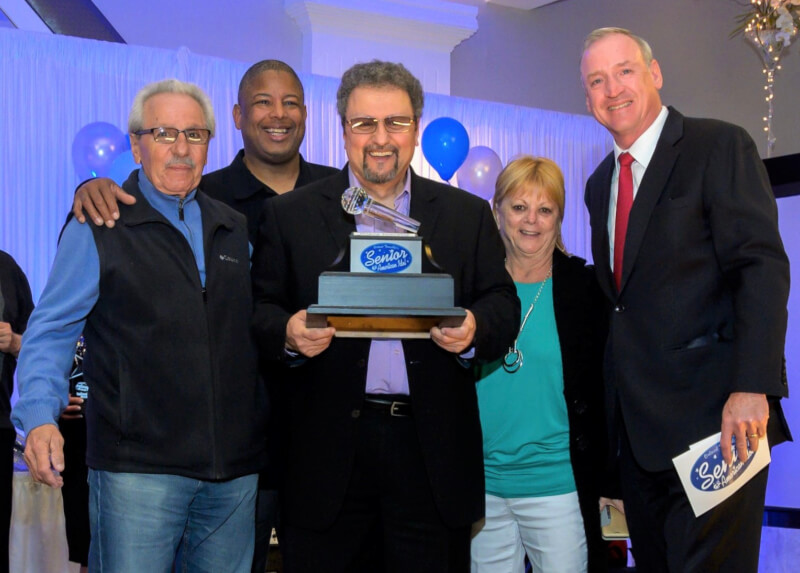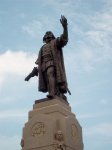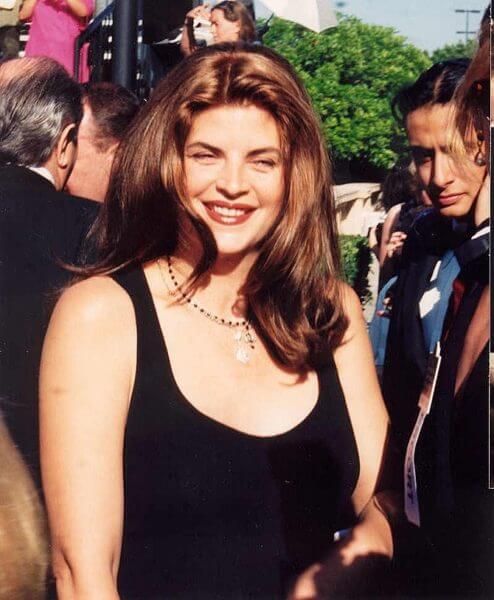Watching the solar eclipse during a different era as a child
The first time I saw a Solar Eclipse was at O’Hare Airport in July 1963, in an era of science fiction, nuclear bombs and outer space aliens. I’m not sure the excitement is the same as today as then.
By Ray Hanania

Free/General/Tuesday April 2, 2024. It was a bright Saturday late afternoon on July 20, 1963 and I was with my mom and dad at O’Hare Airport waiting for a cousin to arrive from overseas.
Back then, with no airport security concerns, we were able to go right to the gate at O’Hare where the arriving airplane would disembark and greet arrivals.
The world has changed a lot since then, but science and astronomy has not.
That day, there was a Solar Eclipse when the Moon passed between the Earth and the bright Sun obscuring most of the Sun and darkening the sky and surroundings on Earth. It was late in the afternoon around 5:30 PM.
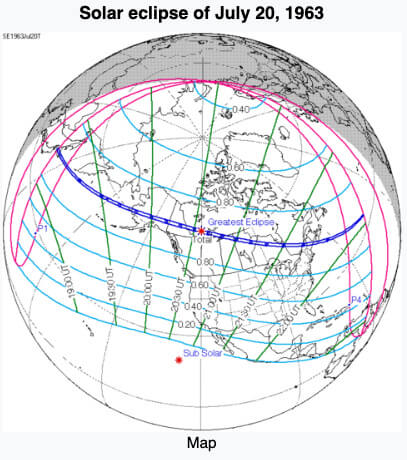
Only certain parts of the Earth could see that Solar Eclipse in its totality, such as in Canada– but in Chicago, you could see part of the Sun blackened as the moon passed over it like a black object taking a bite in the northern sky.
It was a big deal. We were warned then, like today as another Solar Eclipse is scheduled to occur on Monday April 8, not to look at the Solar Eclipse as it happens. We have always been told not to look directly at the sun to avoid causing damage to our eyes. It’s something we all learn early in life.
But back then we didn’t have cell phones and our personal cameras were not that great. Newspapers were more influential than TV, back then, and there was a lot of information on the 1963 eclipse. One source of information that everyone saw was included in that week’s edition of the “Peanuts” Comic Strip where Linus explained the safest way to view it.
We had a Bell and Howell soundless movie camera, but we were concerned about the sun damaging the camera lens. We also had a black box Kodak camera, too. But there was the same concern that pointing the lens towards the sun would cause damage.
Cameras were expensive back then, and still one of the great technologies we had next to the TV, stereo and telephone.
So, my dad brought two pieces of paper and punched a small hole in the center of one sheet using a sharp pencil that he kept in his shirt pocket — dad was an accountant back then with Sinclair Oil Company in Chicago. The oil giant featured the green inflatable Dino the Dinosaur toy that he would bring home.
But the Solar Eclipse was special. There was a Solar Eclipse that took place the year before on Feb 5, 1962. It turns out that NASA was sending John Glenn, one of seven Mercury Astronauts, to the moon. Glenn and Friendship 7 landed on the moon on Feb. 20, 1962 only two weeks later. Space exploration was growing in 1963 under then President John F. Kennedy.
A year later after Glenn’s historic landing, Americans got to look north and see a partial Solar Eclipse which with the maximum eclipse taking place over Canada. It was spectacular.
As a baby boomer, I grew up in an era in which the impact of nuclear bombs and radiation were frightening and often the subject of television science fiction films. Space travel was captivating.
The movie “Them!” premiered in 1954, when I was only two years old. But it was one of my favorite movies when I finally got to see it years later, right around the appearance of Sputnik and the Solar Eclipse.
But the real fright of space began on October 4, 1957 when the Soviet Union, the Communist nation that we helped save during World War II, began the cold war and threatened nuclear destruction of America. There were several Sputniks, Soviet Satellites we feared would harm our nation. including Sputnik 3 launched on May 15, 1958.
Sputnik provoked our fears and a naive public response to those fears. In Kindergarten and First Grade, we practiced hiding under our little wood desks in our brick schools in the event of a Soviet Nuclear Attack. I remember crawling under my little wood desk clutching my box of Crayola Crayons worried that the world around us would be destroyed in much the same way that monsters were being created ad destroyed on TV movies.
By the time the Solar Eclipse had arrived viewable from Chicago, we were primed by fear, awe and wonderment by space, science and the expanding fascination of science fiction that grew out of the post war era and the emergence of baby boomers.
My dad captivated the fascination of the kids at the airport when the eclipse began. He held the paper with the hole in front of another paper, and slowly measured it apart from each other as the black image of the moon covering the bright dot of the sun formed on the second page.
It was amazing. You could watch the black image slowly cover the bright spot on the paper as the moon covered most of the sun (if I remember correctly, we couldn’t see the full eclipse in Chicago but only a major part of it.)
Outside darkened despite the full eclipse taking place in Canada that July 20, 1963. Images of big screen science fiction creatures crawled through our minds.
The solar eclipse reminded us of the expanse of the universe, the many unknowns and the imaginations of one day seeing aliens visit our planet, as they did in “The Day the Earth Stood Still” which was released in 1951 — before I was born but left a deep fascination with me as I grew through childhood.
I’m not sure children today share the same intense fascination that I and other kids of my generation shared back in the 1950s and 1960s with mysteries of space and astronomy.
It was always with me. When I was earning enough money, as a reporter at the Chicago Sun-Times, I purchased a massive Celestron telescope so my daughter, who was only 8 years old in 1986, had to stand on a milk crate in the back yard of our Tinley Park home to watch Halley’s Comet with its bright white tail in the western sky.
Halley’s comet reminded us of the massive expanse of the universe. The comet cycled through space around the Sun passing Earth every 75 years. It will not be back until 2061. If I am lucky — really lucky — I will be 108 years old. My daughter will be 83. The grand kids will be in their 60s.
I still have that Celestron telescope that I bought from the Chicago Planetarium for $3,700 that year. It was worth the memory.
When the Solar Eclipse happens over the U.S., again partially viewable from Chicago, and the Moon passes between the Earth and the Sun on Monday, April 8, 2024, it will be another moment impacting the lives not only of young people who can marvel at the reality of science and the universe, but for us older people, too.
Moments like that make great memories.
Don’t waste it.
Subscribe to Ray’s Syndicated Columns
(Ray Hanania is an award-winning former Chicago City Hall reporter and political columnist. This column was originally published in the Southwest News Newspaper Group in the Des Plaines Valley News, Southwest News-Herald, The Regional News, The Reporter Newspapers. For more information on Ray Hanania visit www.Hanania.com or email him at rghanania@gmail.com.)
A Message from Ray Hanania
I write four (4) columns each week on mainstream American politics civering Chicago, Illinois and the nation, and also columns on seniors and slice of life humor and serious issues.
I hope you will subscribe, enjoy the columns and share your feedback on my system’s new chat format at my website at www.RayHanania.com or www.Hanania.com, where all of the columns (FREE and PAID) are now hosted and distributed.
You can subscribe as a PAID subscriber, or as a FREE subscriber. Each week at least one column is distributed FREE of charge.
Thank you for reading my columns and listening to my podcasts. You can subscribe by clicking this link:
Again, a Big Thank You for supporting my writings. Your support means a lot to me.
RAY HANANIA

Click here to download the Podcast
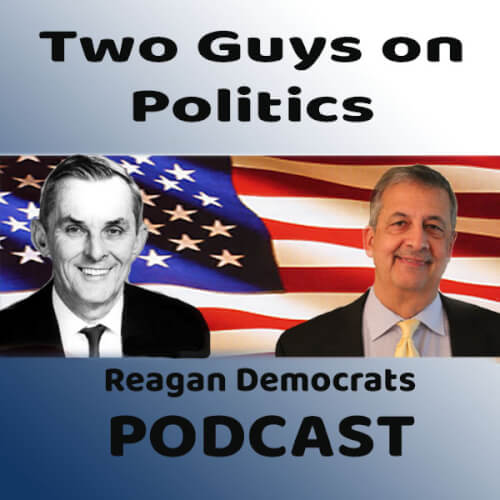
rip into the headline stories the rest of the media ignores. Click to view on YouTube
Subscribe to Ray Hanania’s column by clicking this link
